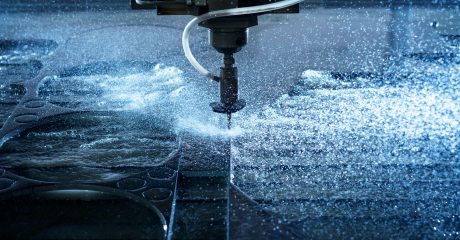Selection of the right type of machine in multi-axis CNC machining is among the most crucial decisions. It determines the overall capabilities of the process, the designs that are possible, and the overall costs. 3-axis vs 4-axis vs 5-axis CNC machining is a popular debate and the right answer depends on the requirements of the project.
This guide will take a look at the basics of multi-axis CNC machining and compare 3-axis, 4-axis, and 5-axis CNC machining to assist you in making the right choice.
Definitions of Each
3-Axis Machining: This is the simplest and most popular choice in the industry. These machines are easier to handle and allow machining on all 6 sides of a part. One of the most distinguishable aspects of the 3-axis process is the orientation of the workpiece, which remains stationary.
4-Axis Machining: This is more advanced than its 3-axis counterpart. In addition to the movement of the cutting tool in X-Y-Z planes, they allow the workpiece to rotate on the Z-axis as well. Doing so means that 4-axis machines can work on as many as 4 sides without any special requirements.
5-axis Machining: This type takes things one step further and allows rotation on two planes. This multi-axis rotation along with the cutting tool’s ability to move in three directions are the two integral qualities that make it possible for these machines to handle the most complex jobs.
Main Differences Between 3, 4, 5 Axis CNC Machining
Understanding the complexities and limitations of the kind of CNC machining is integral to ensuring the best balance between the cost, time, and quality of the process. Here are the 5 main differences between the kinds of CNC machining.
Working Principle – The working principle of all CNC machining is the same. The cutting tool guided by a computer revolves around the workpiece to remove material. The difference comes in the additional capability to rotate about different planes. Both 4-axis and 5-axis CNC milling allow rotation about different coordinates and this quality results in the creation of more complex shapes with relative ease.
Precision & Accuracy – CNC machining is known for its accuracy and low tolerances. However, the type of CNC does affect the final tolerances of the product. 3-axis CNC, albeit very accurate, will have more chances of random errors due to consistent repositioning of the workpiece. Both 4-axis and 5-axis CNC machining don’t have that issue as they don’t need any repositioning. They allow cutting on multiple planes on a single fixture. Furthermore, it’s important to note that this is the only source of discrepancy in the quality of 3-axis machining as well. Apart from this, the overall quality in terms of precision and accuracy remains the same.
Applications – Rather than industry-wide application, the differences in the type of CNC pertain to the nature of the product. For instance, the difference between 3-axis, 4-axis, and 5-axis milling products will be based on the overall complexity of the design rather than the industry itself.
Costs – Costs are among the primary differences between 3, 4, and 5-axis CNC milling. 3-axis machines are naturally more economical to purchase and maintain. While the expenses incurred on operators remain the same in the case of 4-axis and 5-axis machines, the fixtures still take up a significant portion of the expenses.
Lead Time – When it comes to the overall lead times, continuous 5-axis machines provide the best overall results. Continuous 4-axis machines come after that as they allow rotation in one axis and can only handle planar angular features in one go. Finally, 3-axis CNC machines have the longest lead time because the cutting takes place in stages.
Start Your Projects with Custom Tool’s CNC Machining Services
For any project or business, the right manufacturing partner can be the difference between success and failure. Manufacturing is an integral part of the product development process and the right choices in that stage can go a long way toward making a product viable. Custom Tool and Grinding is the ideal manufacturing choice for any situation because of our insistence on delivering the best with the utmost consistency.
